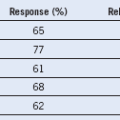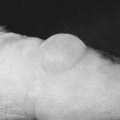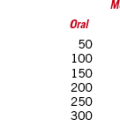Chapter 9 Anemia of Chronic Diseases
Table 9-1 Suspected Causes of Anemia of Chronic Disease
Treatment of Anemia of Chronic Diseases
Treating ACD often is unnecessary if the patient is asymptomatic. However, if the anemia is symptomatic or severe, treatment of the anemia itself may be indicated. Epidemiologic studies, such as those in patients with heart failure, HIV, cancer, or kidney disease, suggest physiologic and subjective improvement in signs and symptoms after treatment for anemia.1,2 However, treatments need to be individualized because the risks of erythropoiesis-stimulating agents or iron therapy in non–iron deficient subjects are theoretically real and practically unknowable given the variety of underlying conditions that are incorporated under the rubric of chronic disease. A trial of ACD-directed therapy may be indicated in symptomatic patients.
The first priority in ACD should be to correct any reversible contributors to the anemia. Because the extent of ACD mirrors the activity of the underlying disease, all efforts should be made to treat the underlying disease. Furthermore, efforts to correct anemia should be modulated by the recognition that the “optimal” target hemoglobin for subjects with ACD is not known. Reports of anemia in subjects without inflammation but religiously opposed to transfusions have suggested a physiologic cutoff for anemia of 5 g/dL, below which increased mortality is seen.3,4 In addition, acutely ill patients have not been shown to benefit, in randomized, controlled studies, from transfusion “triggers” above 7 g/dL.4 Nonetheless, symptomatic improvement is seen in subjects with a range of chronic diseases who were treated for anemia of a more modest degree.1
1 Kimel M, Leidy NK, Mannix S, et al. Does epoetin alfa improve healthrelated quality of life in chronically ill patients with anemia? Summary of trials of cancer, HIV/AIDS, and chronic kidney disease. Value Health. 2008;11:57.
2 Kotecha D, Ngo K, Walters JA, et al. Erythropoietin as a treatment of anemia in heart failure: Systematic review of randomized trials. Am Heart J. 2011;161:822.
3 Bohlius J, Schmidlin K, Brillant C, et al. Erythropoietin or Darbepoetin for patients with cancer–meta-analysis based on individual patient data. Cochrane Database Syst Rev. 2009.
4 Viele MK, Weiskopf RB. What can we learn about the need for transfusion from patients who refuse blood? The experience with Jehovah’s Witnesses. Transfusion. 1994;34:396.







